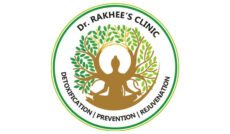In Ayurveda, pulse diagnosis or “Nadi Pariksha” is the first and one of the most important stages of checking the health condition of an individual. In a prominent Pulse Diagnosis Clinic in Pune, the doctor will check your pulse with full concentration first.
The Sanskrit word “Nadi” means “Channel” or “Tube”. It signifies the body’s subtle energy channel or “prana” through which the vital life force flows. According to Ayurveda, there are three “doshas” or mind and body controlling forces. These three doshas are Vata, Pitta, and Kapha. A skilled Ayurvedic practitioner can feel the pulse and decode the rhythm, quality, and depth of the pulse to understand the condition of these three doshas and hence the condition of the body.
What does pulse diagnosis reveal?
Pulse diagnosis or Nadi Pariksha is not simple pulse checking and counting heart rate. A trained practitioner like Dr. Rakhee Parte Pandita concentrates deeply on each rhythm to understand the human body’s vital lifeforce:
- Prakruti and Vikruti: Pulse diagnosis helps to identify Prakruti means conditions of three doshas and mind-body constitution. It also helps to identify any imbalance or Vikruti. This helps to undertake certain treatment plans for a patient.
- The strength of Agni: In Ayurveda, “Agni” is the digestive capacity of the body. Digestive capacity plays a crucial role in maintaining the health and wellness of an individual. At the Pulse diagnosis clinic in Pune, Rakhee Parte Pandita assesses the power of Agni by checking the quality of the pulse.
- Mental and emotional condition: Pulse diagnosis also helps to identify the psychological or mental well-being of an individual. A stressful mind and a peaceful mind create different rhythms that only a trained Ayurvedic practitioner can understand.
Nadi or a lifeforce channel can reveal various physical and psychological conditions of the human body. Understanding what the pulse says is not easy but a subject of a trained Ayurvedic practitioner. Nadi Pariksha is like scanning the whole human body revealing the primary issues immediately.
The art and science of pulse diagnosis
Performing Nadi Pariksha is both an art and a science. The practitioner uses three fingers and presses certain areas of the wrist at different depths to get the rhythm of different doshas. Pressing the pulse is an art that needs complete focus while interpreting the quality of the pulse is a science that reveals the present conditions of doshas.
The Ayurvedic practitioners mainly assess three factors:
- Rate and Rhythm: Is the pulse slow or fast? Is the pulse regular or irregular? Are the beats happening in perfect rhythm or not?
- Depth and Volume: Is the pulse strong or weak?
- Quality: Is the pulse smooth or rough?
Expert practitioners like Dr. Rakhee Parte Pandita take into account various aspects of pulse diagnosis to build a comprehensive picture of your health. She pays sufficient time and attention to Nadi Pariksha before planning Panchakarma or prescribing certain medicines or advising in diet and lifestyle.
Pulse diagnosis is the window into the body’s inner workings. It helps Dr. Rakhee Parte Pandita and her team to personalize treatment plans and detect potential issues in the body. In modern Ayurveda, several new avenues for treatments of all kinds of contagious and non-diseases have opened up. Experts in this field are advising on diet and lifestyle issues. They are undertaking tailored Panchakarma and other treatment procedures effectively. However, the importance of Nadi Pariksha has remained the same over the centuries. In the Pulse diagnosis clinic in Pune, pulse checking and analyzing for every patient or individual seeking preventive treatments is the first and mandatory action before the main treatment.
